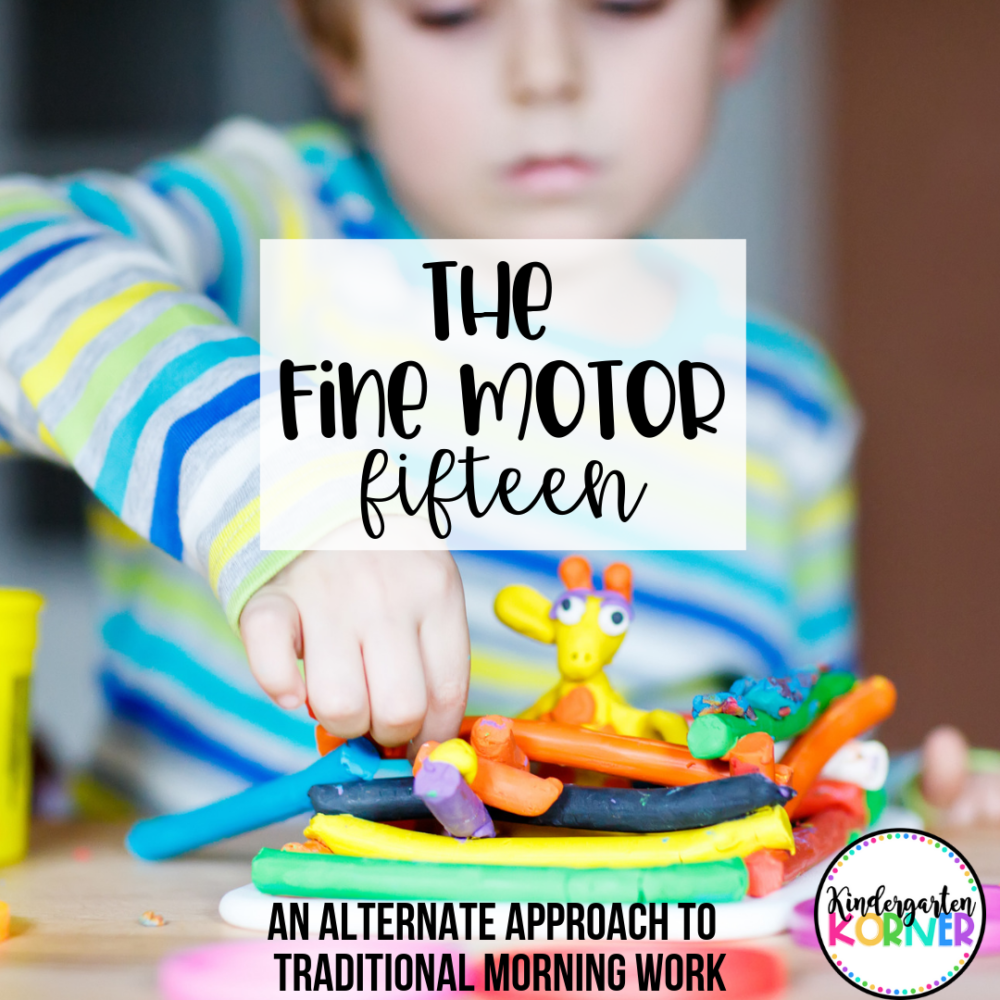Read about why I decided to say goodbye to traditional morning work, and hello to “The Fine Motor 15!”
I have taught kindergarten since 2006. In recent years and especially this year, I have noticed a serious decline in my incoming kindergarten students in the area of fine motor skills. In the age of the iPad, we have five and six year olds entering elementary school knowing how to “swipe left” yet they lack the hand strength necessary to cut, write, and draw.
*This post contains affiliate links. That means that if you make a purchase after clicking on a link, I may earn a small commission at no extra cost to you. This helps to offset the cost of my maintaining my blog.
What Fine Motor Weakness Looks Like
As a result of fine motor weakness, I have seen many children become frustrated and act out negatively because these basic skills are such a struggle for them. I have witnessed students of high academic abilities experience meltdowns when tasks have required writing, cutting, and drawing. I know that these students possess the capability to master our kindergarten writing curriculum. However, fine motor weakness is preventing them from physically being able to do the work.
Interestingly, I have a handful of students who have never used scissors before coming to my classroom. Others hold pencils and crayons with a fist – a technique that they should have outgrown by age three. Self-help skills such as zipping and tying shoes are a challenge for more than half of my students. Some have not developed hand-dominance, and they switch back and forth between their right and left throughout the school day. I even have a few students who repeatedly skip the left side of a decodable book and read the pages on the right side only because they are used to reading on their tablets.

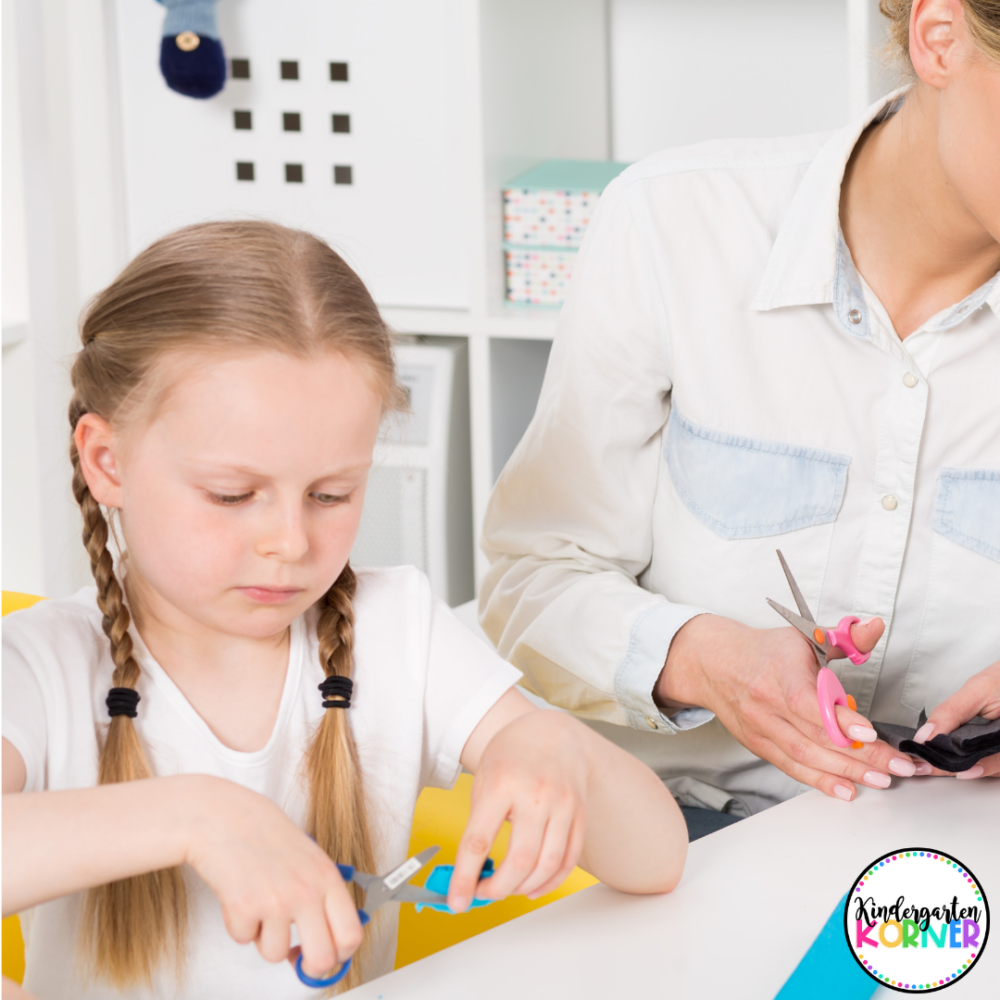
The Research Behind the Vision
I began to wonder whether other early childhood and primary teachers were experiencing the same issues with their students. After doing extensive research on the subject, I learned that teachers across the nation are faced with the same problem. Research suggests that technology is most likely to blame with iPads and video games replacing hands-on play activities. As kindergarten teachers, we now have to teach many basic skills that should have been already mastered. This takes away valuable instructional time.
Fingergym.info.com is an excellent resource for more information about fine motor weakness in children. The site points out the risk of children moving forward in the educational system without developing these vital skills. Potential risks include refusal to participate in activities, avoidance techniques, anger outbursts, and anxiety and depression associated with a lack of competence in motor activities.
Making a Change
I knew I something needed to change. Enter what I call “The Fine Motor 15!” I decided to scrap the traditional morning work worksheet and begin each day with 15 minutes of fine motor activities. I only wish I had done this sooner because the benefits have been endless. This valuable time allows my students to strengthen the intrinsic muscles of the hands while also learning to play cooperatively, take turns, and get our brains into the “Ready to Learn” mindset for the day. My students enter the room each day eager and excited to see what STEAM-based materials they get to explore that morning. It truly sets the tone to make every day a great day!
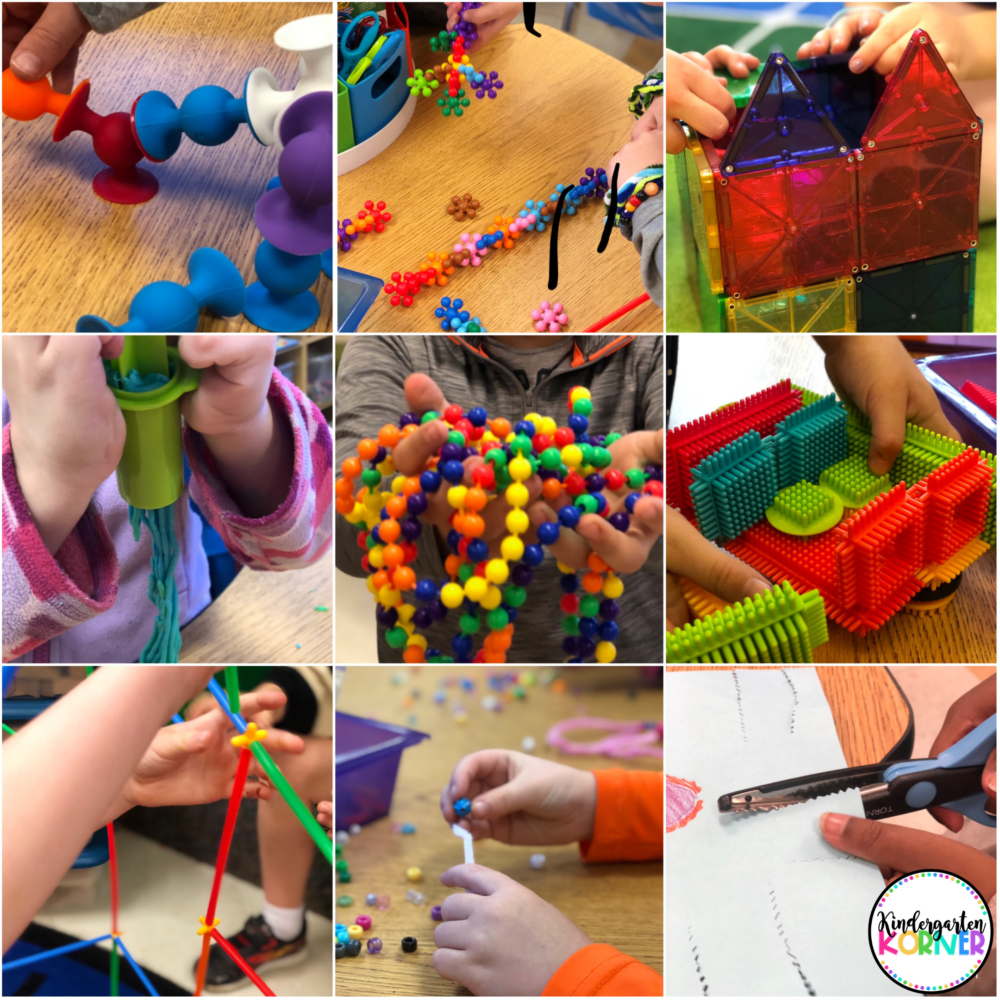
The Benefits of Increased Fine Motor Activity
Dedicating a short time to fine motor play each morning will pay off in the long run. “Working to help children develop the best fine motor skills possible at a young age helps to set the stage for success in school and at home, and more so, contributes to them feeling good about themselves. It also has huge run-off benefits for teachers who can then concentrate on teaching concepts of information rather than focusing on the mechanics of cutting, gluing, or writing.”- Fingergym.com
Today, there is so much pressure to teach all of the standards that we sometimes forget how important it is to lay the foundation before constructing the building. The Fine Motor 15 has allowed me to lay a solid foundation for my kindergarten students by providing them with the skills necessary to successfully complete any writing task thrown their way! I am so glad that I made the switch from the traditional morning worksheet.
Here are some of my students’ fine motor favorites…

My kids love this Word Construction set from Hand2Mind, and I love that it incorporates fine motor and reading at the same time!
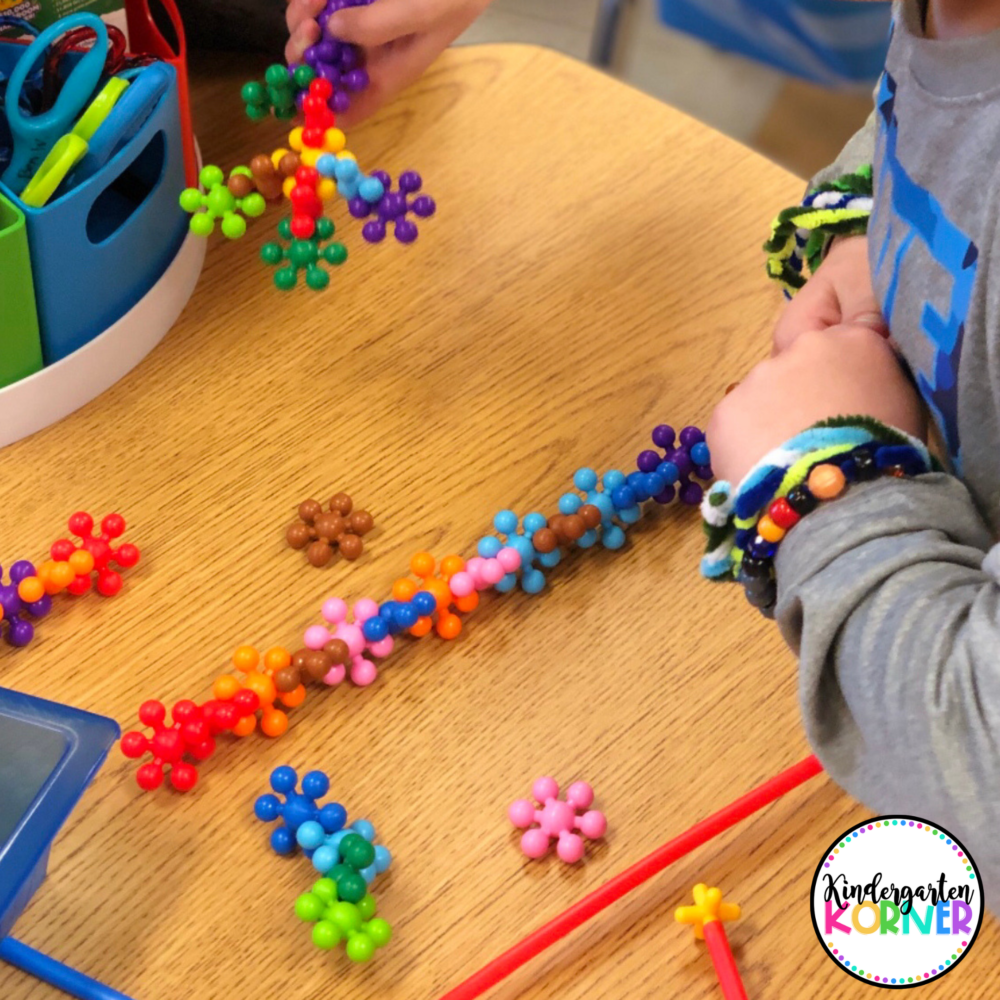

Gears by Hand2Mind are always a favorite!
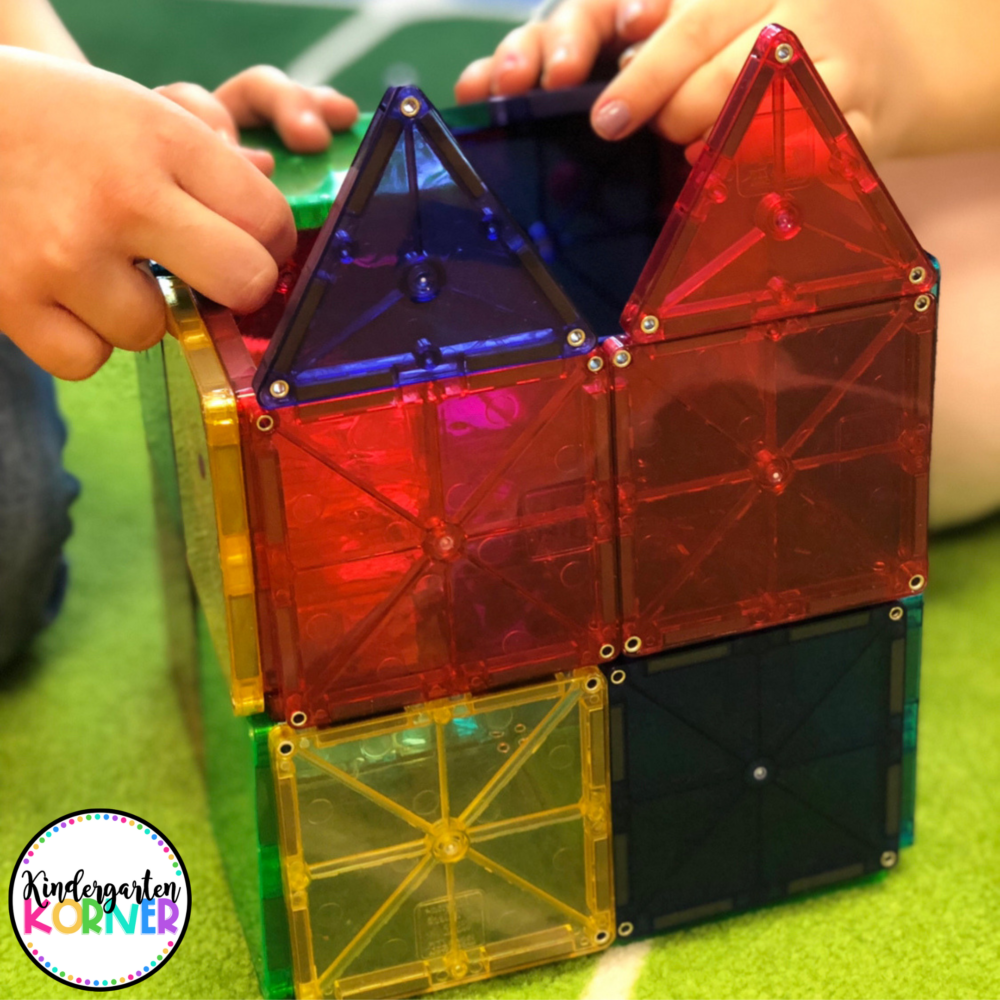
Students love these Magnatiles by Discount School Supply.
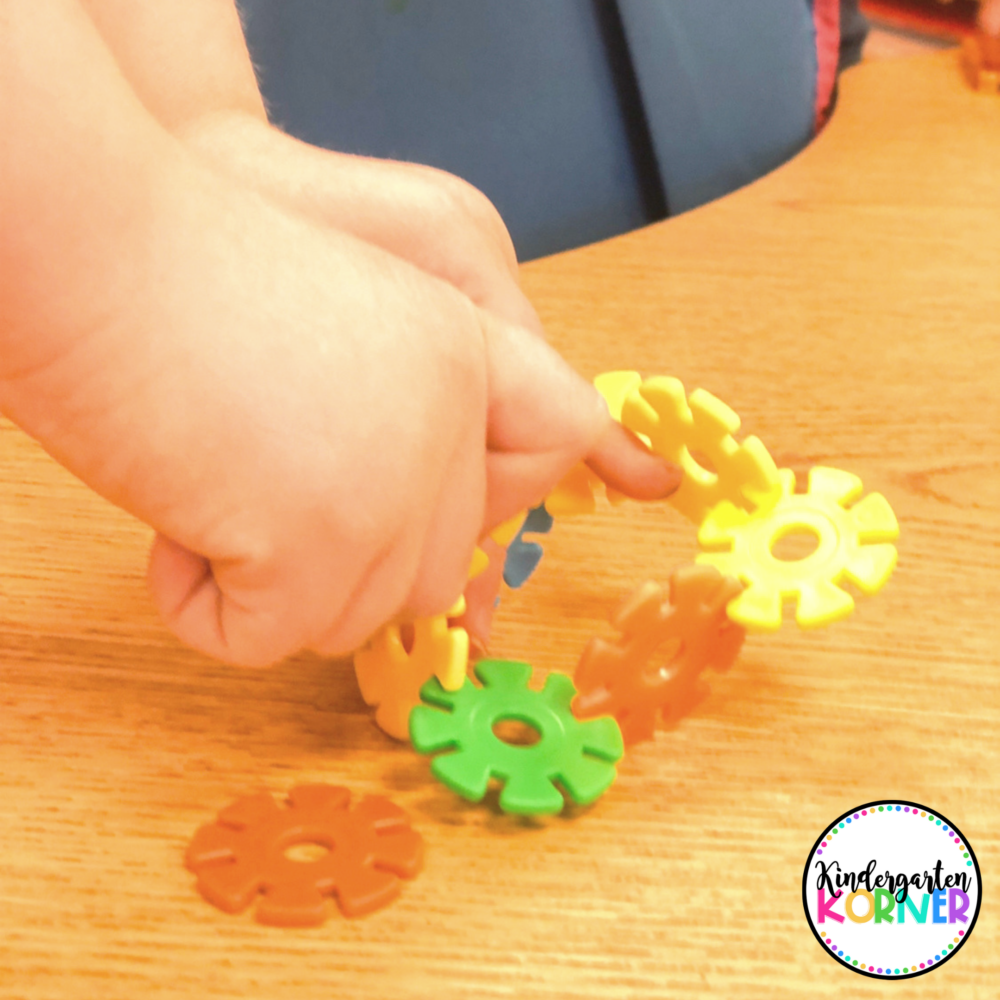
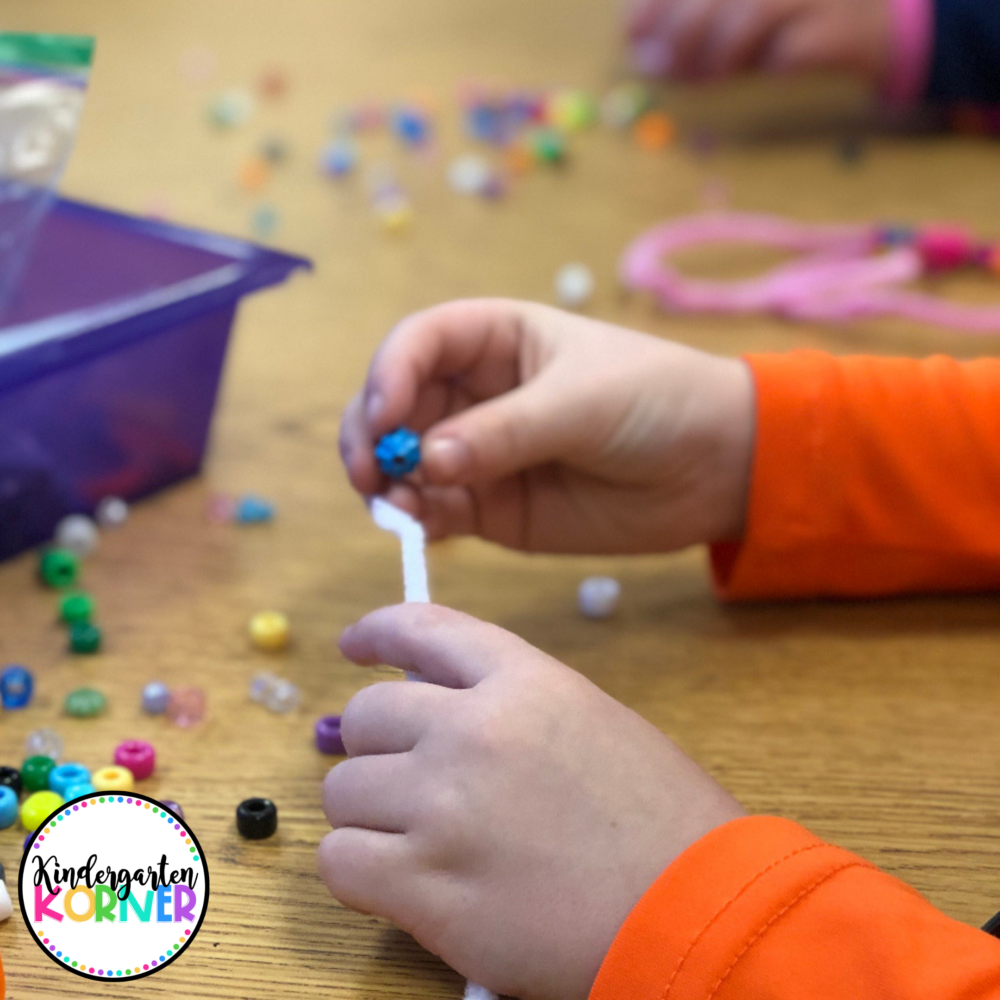
Stringing beads onto pipe cleaners make a fun and simple fine motor center. You can even incorporate this into math. Have the kids string 10 beads, separate them into two parts, and write all of the different combinations! 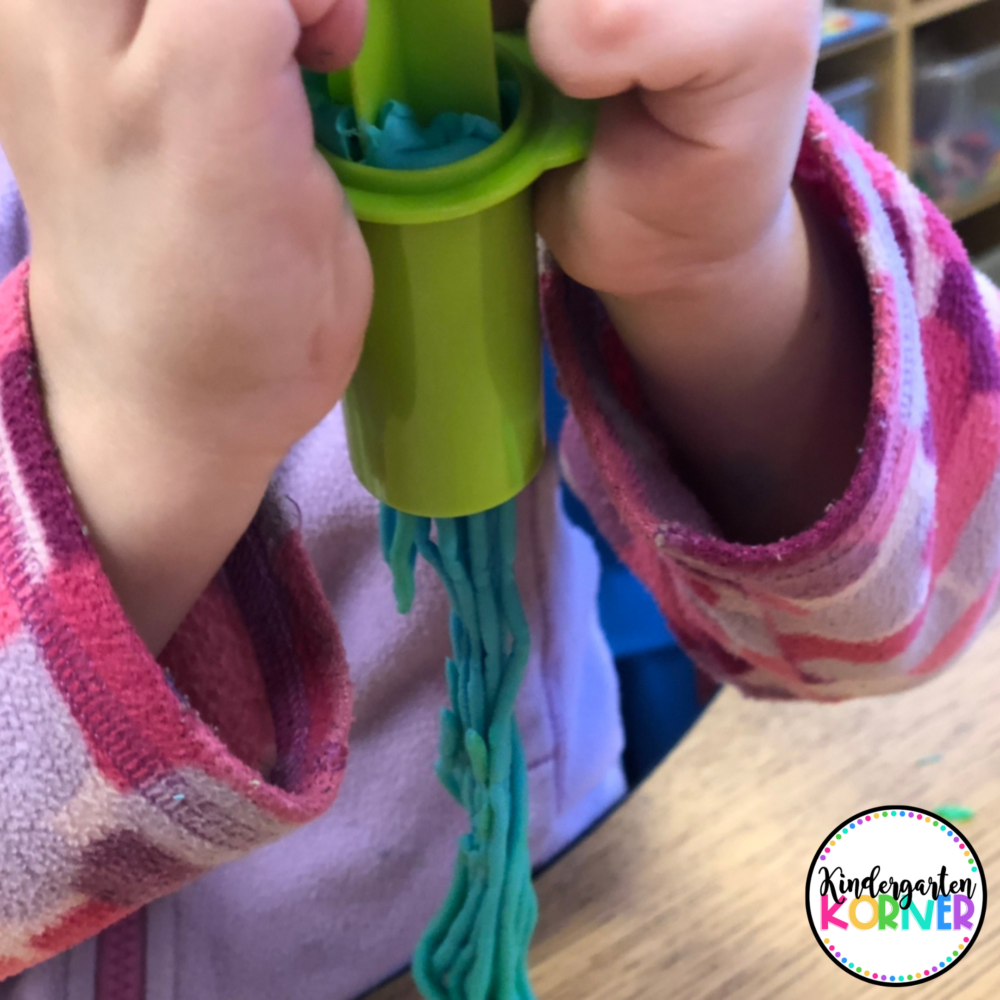
Play-doh Extruders by Discount School Supply are perfect for working those hand muscles!
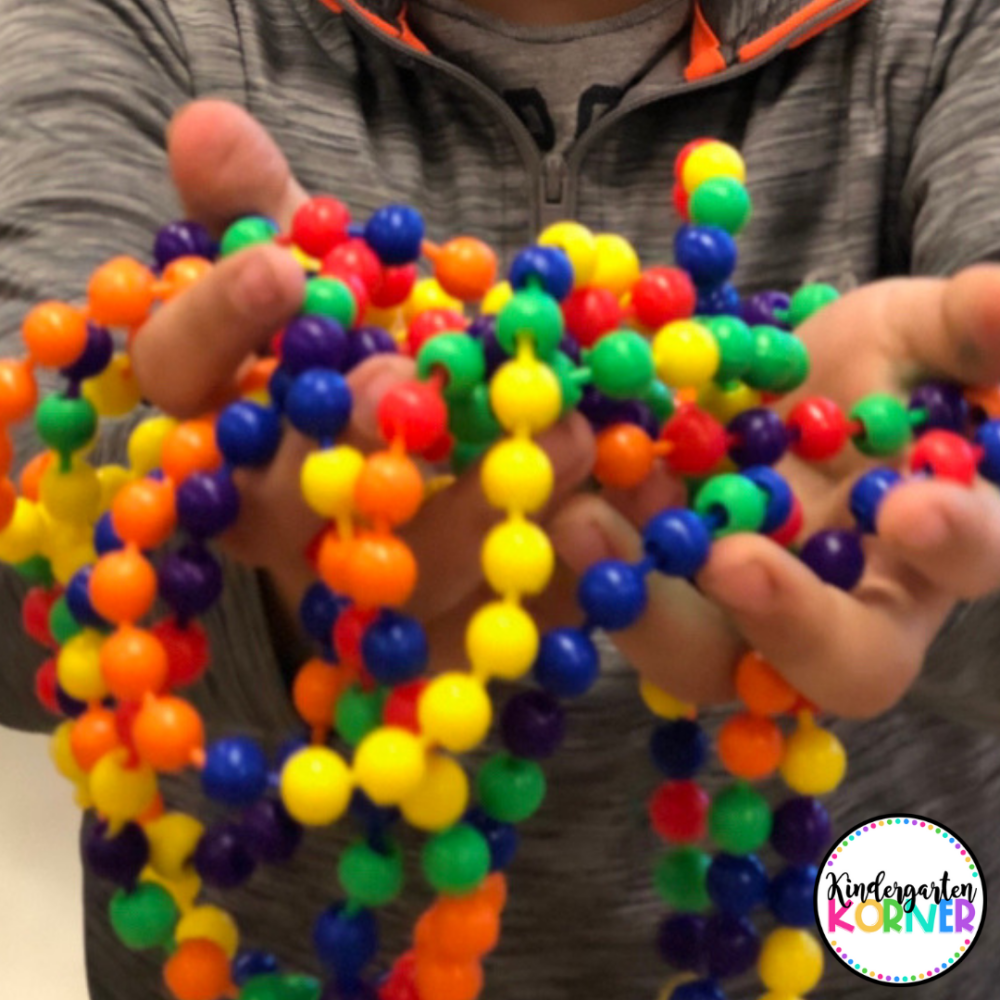
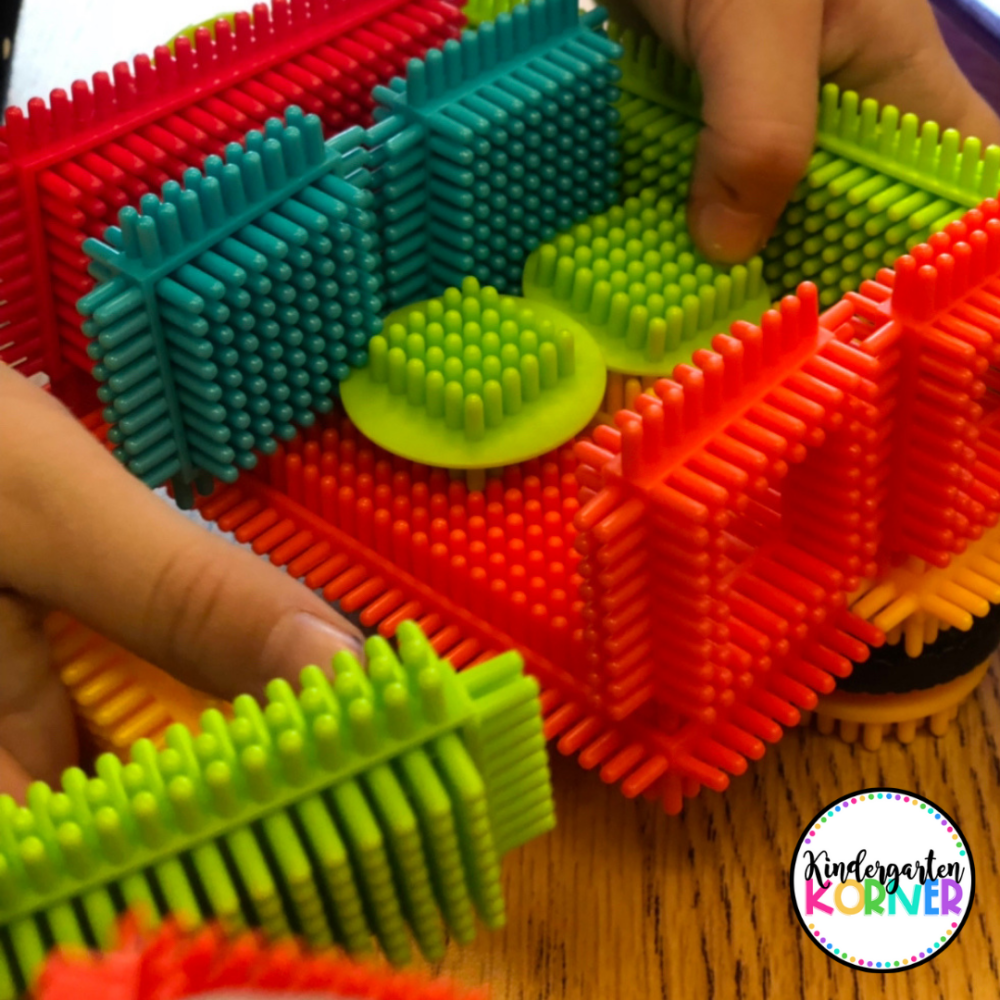
Bristle Blocks by Discount School Supply are another fine motor fav!
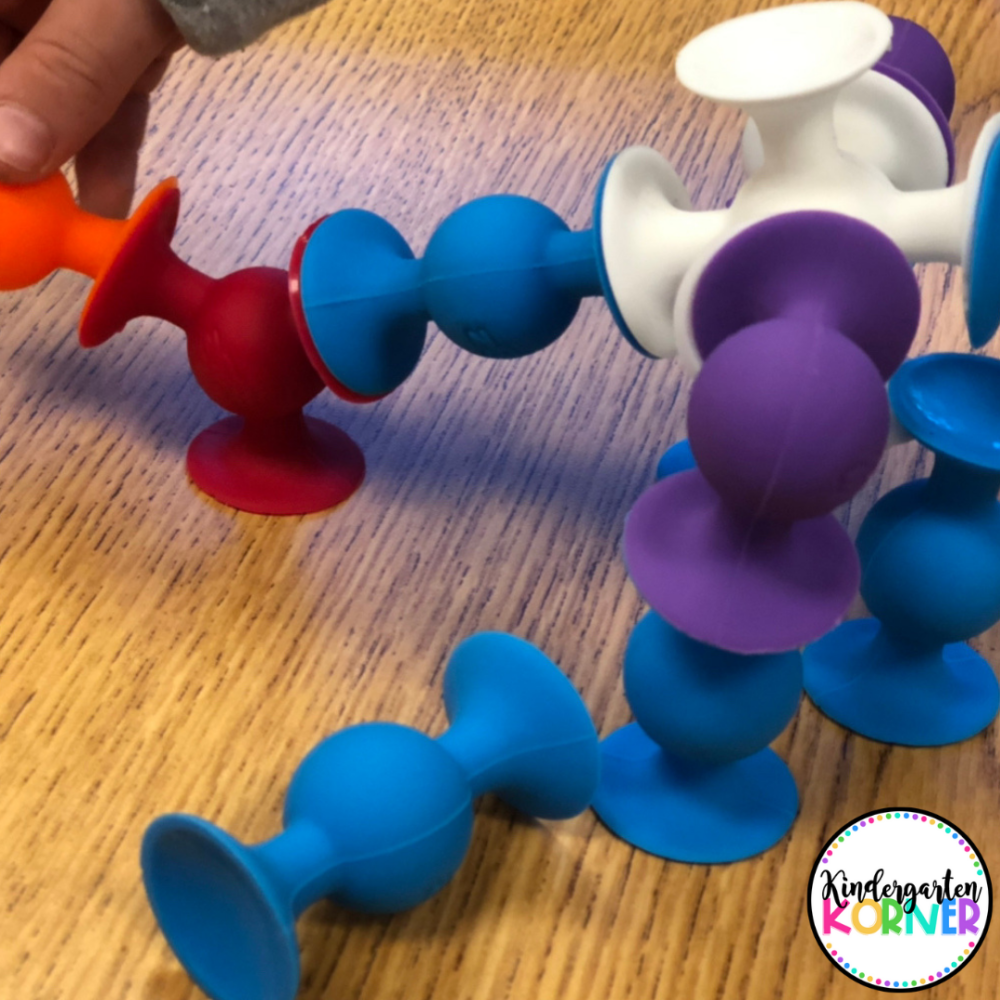
The kids can’t get enough of Squigz by Discount School Supply !
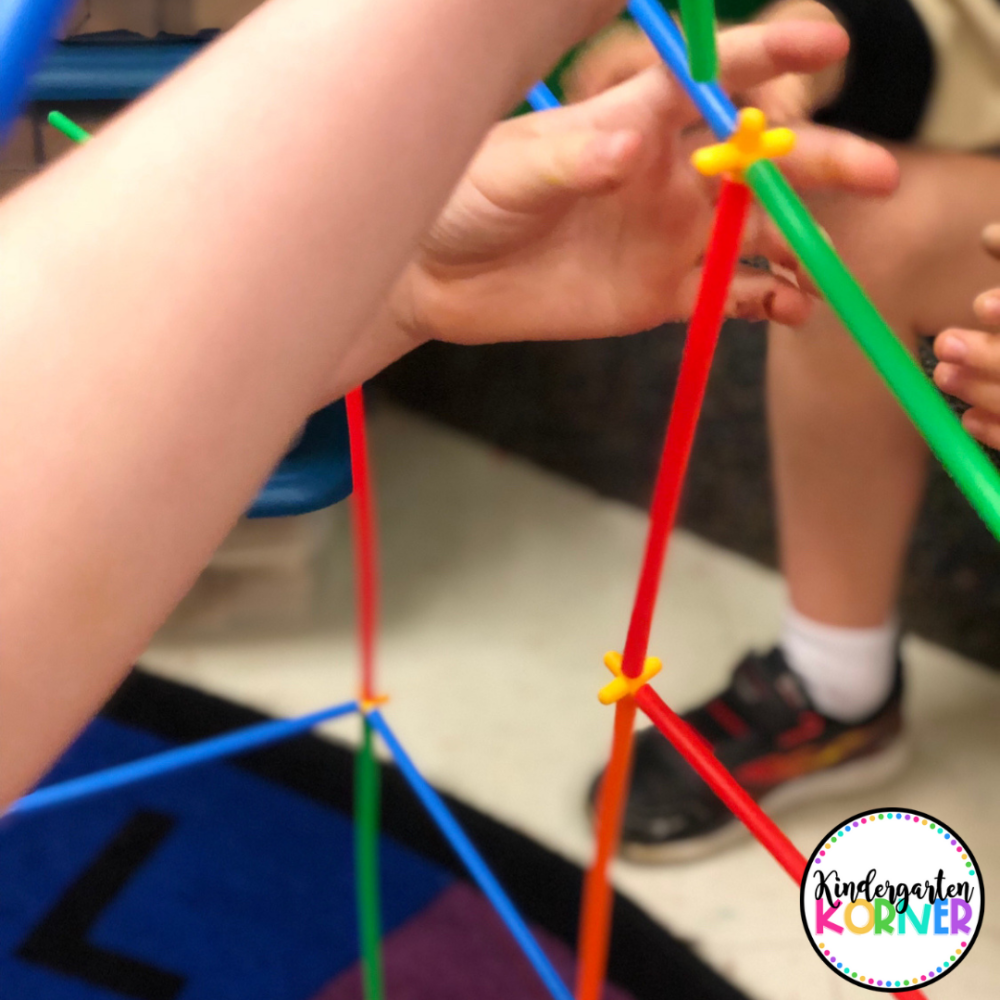
Hand 2 Mind Custom Straws and Connectors are perfect for incorporating geometry into fine motor play.
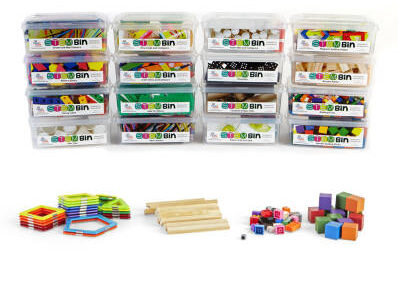
These STEM BINS by Hand2Mind are on my fine motor wish list! They include 18 different manipulatives to use with open-ended STEM activities and make the perfect ready-to-go fine motor centers!
Click HERE to view my FINE MOTOR FAVORITES by Hand2Mind!!
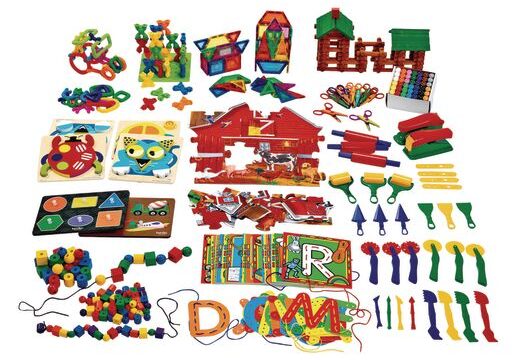
I also love this Fine Motor Bundle Kit by Discount School Supply. It has everything you need to get started with fine motor activities. This is definitely a big investment. It would be a great idea for a grant or Donor’s Choose project!
CLICK HERE to view more FINE MOTOR FAVORITES by Discount School Supply!
Have you made the switch from traditional morning work?
Comment below. I would love to hear what morning work looks like in your classroom!
Check out my Kindergarten Korner Blog for more ideas for your primary classroom!


